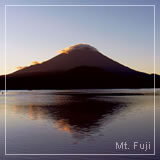Zen garden is waterless garden
Zen garden is a garden which doesn't have water. The garden doesn't have pond or stream. Temples of zen denomination in buddhism sometimes have this type of garden.
The garden ground is covered with white sand or gravel. Some rock
are placed on the garden. Old-days people meditated that the waterless
garden was miniature nature. Gardeners (usually monk) draw zigzag on
white sand with rake. It symbolizes water. Rocks are images of
mountains.
As dead leaves or rain make the sand ugly-looking, gardeners have to
sweep and maintained the garden quite often.

How Japanese people do not know zen garden.
 The
most popular style of Japanese garden outside of Japan is
probably Zen garden while this Japanese don't know this fact at all.
The
most popular style of Japanese garden outside of Japan is
probably Zen garden while this Japanese don't know this fact at all.
Many Japanese people don't know even the word of Zen-garden. We can
guess it is a temple garden. But it is hard to associate zen with
garden.
This dry landscape garden is actually called Kare-san-sui in Japanese
language. It means waterless and hill-less garden.
How to enjoy Zen garden
 Zen
garden is the garden to see, not for walking around. In temples
people enjoy landscape from the deck.
Zen
garden is the garden to see, not for walking around. In temples
people enjoy landscape from the deck.
Why rocks are there? Why tree or shrubs are planted there? Zen gardens are ideal place to meditation.
It is important that you do NOT see the garden BUT you feel or imagine.
Ryouanji-Zen garden in Kyoto
The most beautiful Zen garden in Japan is Ryoanji in Kyoto. In Ryoan-ji's garden, there are 15 stones which are images of mountains. However, people can find only 14 stones. Even the people try to find rest of one stone from different places, they will not be able to find them. One stone is hidden by the other stones.
